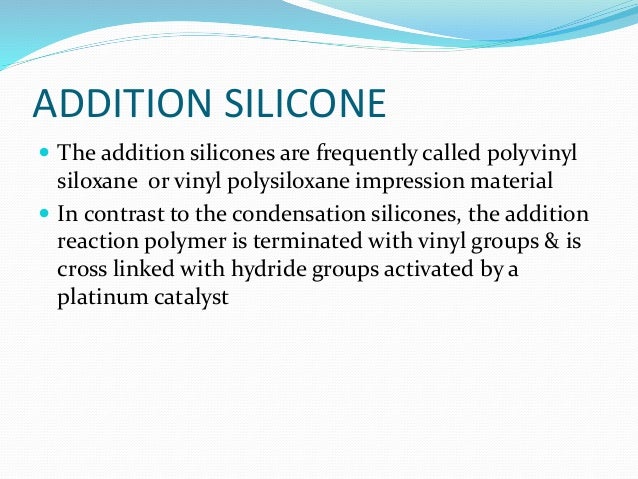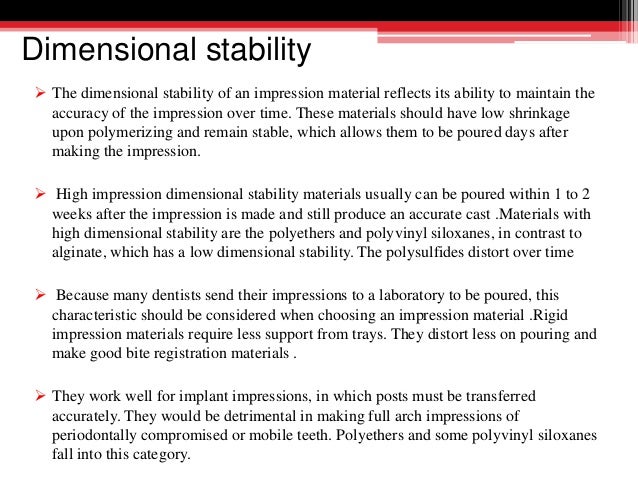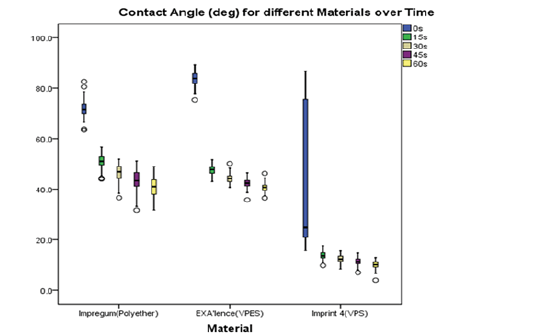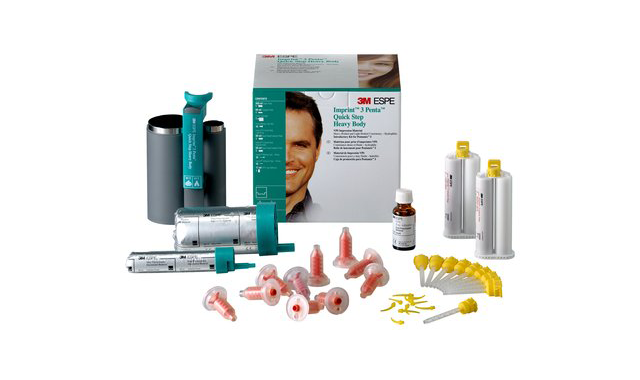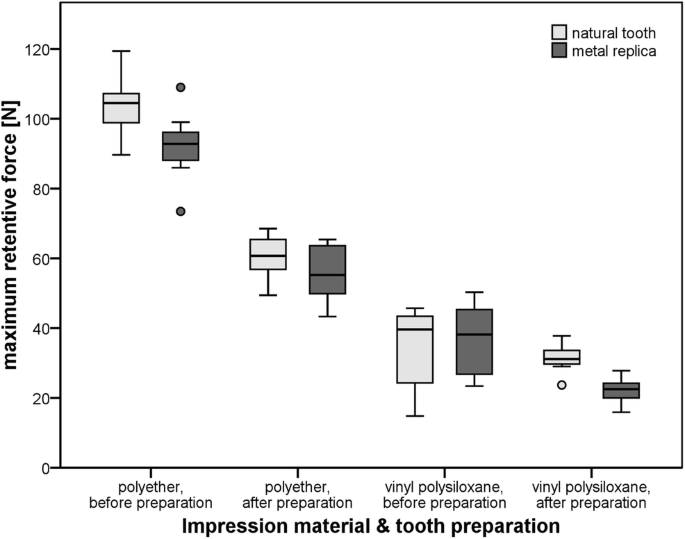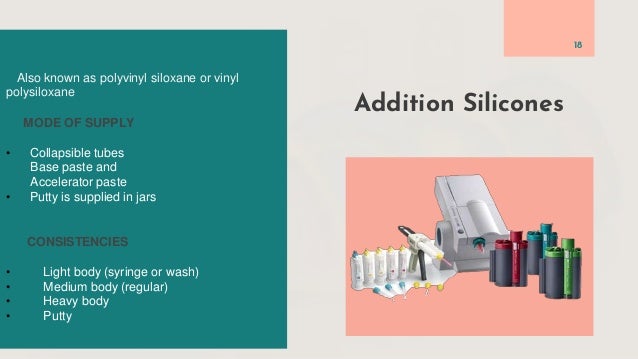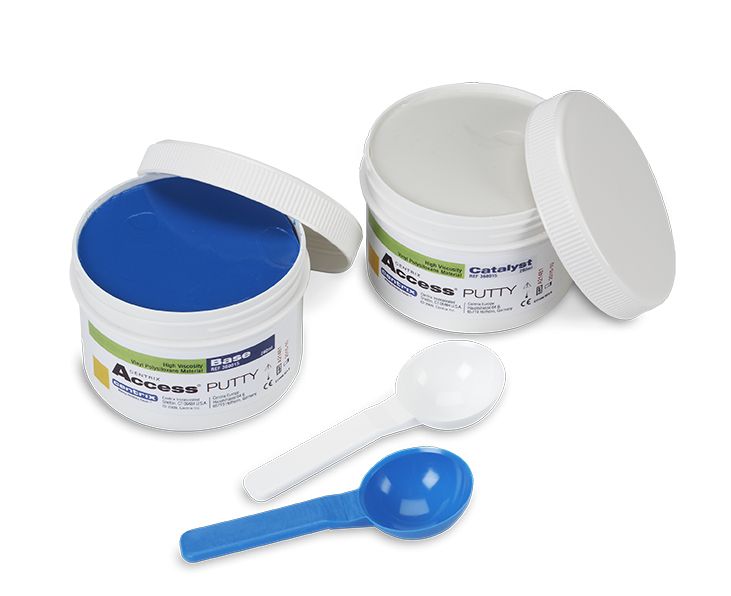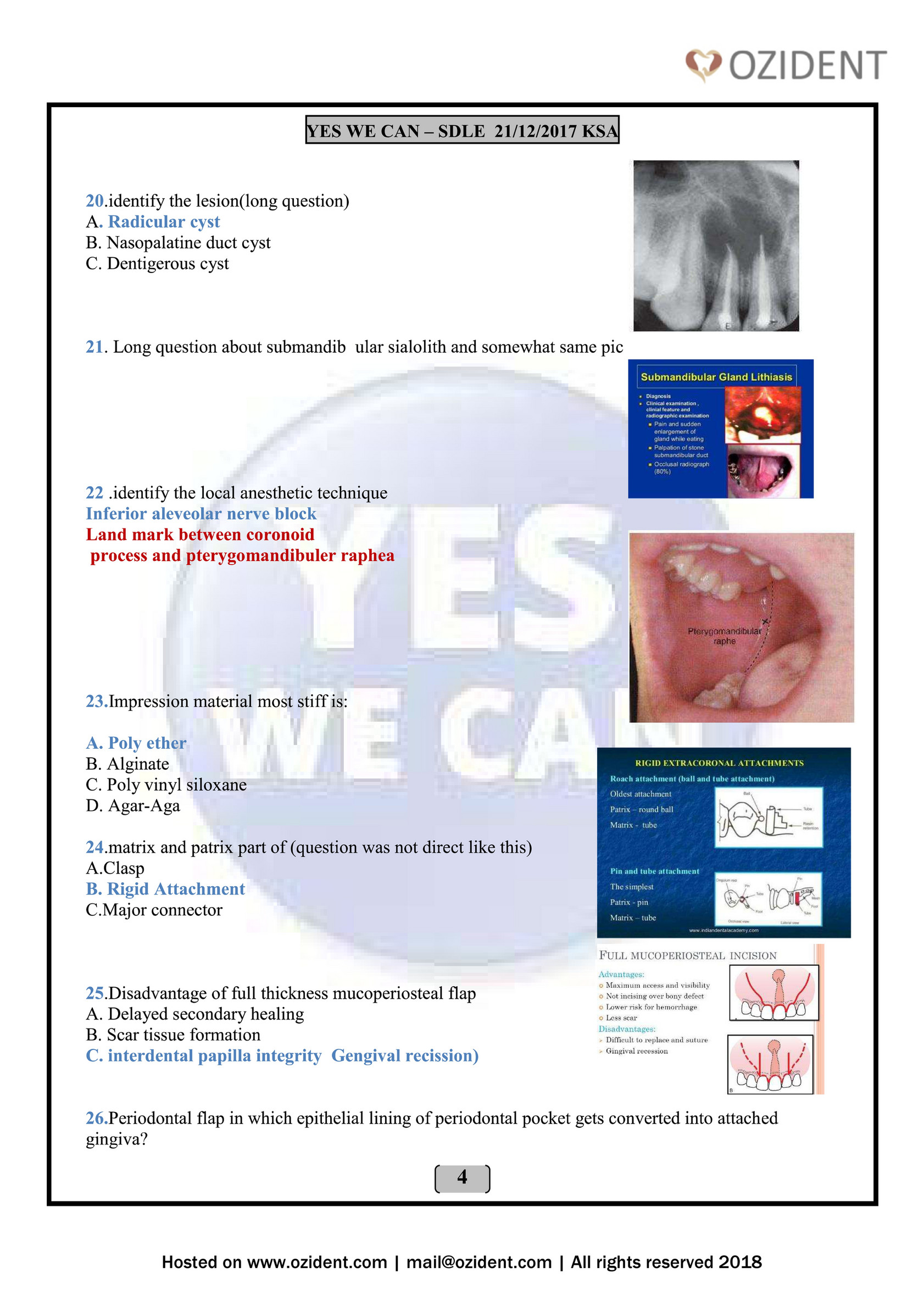A light body material was injected around the margins figure 16 3 a as the impression tray was loaded with a heavy body material figure 16 3 b the tray was seated figure 16 3 c and the material was allowed to set completely before it was removed from.
Vinyl siloxane impression.
Advances in elastomeric chemistries have given birth to a new generation of impression materials.
Thermo clone vps putty.
Polyether vinyl polyether hybrids and polyvinyl siloxane.
German mj carrick te mccabe jf.
While there are 5 types of impression materials commonly used in dentistry today e g hydrocolloids polysulfide addition silicone polyether and vinyl polyether hybrids only 3 are commonly used for final impressions.
Chromaclone pvs impression material captures even the smallest details enabling you to make effective impressions the first time every time.
Polyvinyl siloxane impression materials.
Several methods of using very high viscosity putty materials to form trays to obtain uniform bulk of the wash impression are described and the disadvantages of each of these techniques is pointed out.
Thermo clone bite registration.
Bite registration material.
Johnson gh craig rg.
A scr eening test.
A polyvinyl siloxane impression material was used to take a full arch impression.
Since that time and.
The material is super hydrophilic not only during application but also during immediate pouring of gypsum.
Its extremely low contact angle allows it to flow deep into the sulcus for highly visible margins.
Hydrophilic polyvinyl siloxane impression material.
Polyvinyl siloxane impression materials have been shown to have excellent properties as impression materials.
Sign up to receive extra promotions and more.
However they are sensitive to manipulative variables.
A combination of a polyvinyl and a polyether impression material called vinyl siloxane ether.
Polyvinyl siloxane is widely used in dentistry as an impression material.
Received for publication november 1997.
It is also used in other contexts where an impression similar to a dental impression is needed such as in audiology to take ear impressions for fitting custom hearing protection or hearing aids 2 or in industrial applications such as to aid in the inspection of interior features of machined parts for example.
Accepted april 1998 introduction the polyvinyl siloxane impression materials are addition reaction silicone elastomers which were first introduced in the 1970s.
An update on clinical use.
Int j prosthodont 1989.
Vinyl polysiloxane impression material.
Interaction of gloves and rubber dam with a poly vinyl siloxane impression material.
Stober t johnson gh schmitter m.







